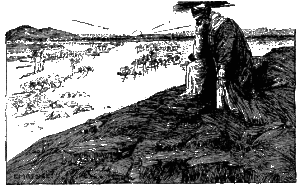
The dizzying climax of the third season of Game of Thrones features the dragon queen Khaleesi walking into an encircling crowd of her newly ‘liberated’ people. As the dragons circle up to the heavens, the camera ascends, transforming the blonde queen into a speck of white at the centre of a sea of brown arms bowing to her in adoration.
It’s an ecstatic scene, worthy of the great expectations granted to the most popular narrative series since Harry Potter. But it’s also laced with a familiar irony. The blonde leader Khaleesi has establish a paradoxical form of domination based on freedom. Previously she had released the ‘unsullied’ slave warriors of Astapor from bondage, granting them freedom to come or go. In gratitude, they provide her with undying loyalty. The same logic applies with the Yunkish. Despite the violent overthrow of their city, the population welcome their liberator with an absolute devotion.
You don’t need to travel far in thought to reach the conclusion that this is a bold fantasy of Western power in a postcolonial world. Like the role of Jason Russell in Kony 2012, Western engagement with the rest of the world has enjoyed the idea that a single white individual can transform the lives of whole populations. This racial narcissism has an extensive lineage in Hollywood scenarios when heroes like Indiana Jones venture forth beyond the limits of European civilisation.
As such, this final scene would be a remarkably crude revival of this unilateral fantasy. However, in the broader cosmology of Game of Thrones, it has a particular narrative charge. At the core of the epic is a battle between North and South. The Starks are an honourable family speaking in broad Yorkshire accents, lead by brave men with dark beards. More than anything, Starks are true to their words. Their mortal enemies are the Lannisters, a priestly family, clean-shaven and without scruples when it comes to realising their family’s ambitions.
The conflict between the Starks and the Lannisters harkens back to the cultural fault-line in English history, between the democratic Anglo-Saxons and the hierarchical invading Normans. John Ruskin extended this binary to the division between the honest labour of the Gothic craftsman and the baroque ornamentation of the Italians – read godly Protestants and corrupt Catholics. Later versions include Manuel in Fawlty Towers and the representations of feckless Greeks in the recent financial crises.
The Northerners are given added gravitas in Game of Thrones as the guardians of the wall, a massive structure designed to keep out the wild creatures of the north. The coming winter threatens an apocalyptic invasion of Westeros. Thus the north-south conflict finds itself potentially outflanked by enemies from either end.
In this context, Khaleesi seems to follow the established narrative from the Second World War of the new democratic United States that has potential – aided by magical technology – to sweep away the tired rivalries of the Old World. But in re-creating this myth in 2013, they’ve had to transform GI Joe into a Zenobia-like warrior queen from the East.
The irony, of course, is that the effect of this freedom is to create conformity on a mass scale. The current concerns about mass surveillance by PRISM makes us particularly receptive to the compromises seen necessary to protect our freedoms.
However, given the savage narrative reversals that mark Game of Thrones, this great white hope is unlikely to magically resolve global conflict. In the next series, do we look forward to re-run of the second Iraq war, as the liberated turn upon themselves? It is the constant demand of the series to keep us on the edge of our seats that offers the most positive prospect for its geopolitical allegory.
 Contrary to the usual talk about the rise of the Global South, The New North: The World in 2050 by Laurence Smith argues that climate change will favour the development of the Arctic region, where there is more land than the south. From his
Contrary to the usual talk about the rise of the Global South, The New North: The World in 2050 by Laurence Smith argues that climate change will favour the development of the Arctic region, where there is more land than the south. From his 
